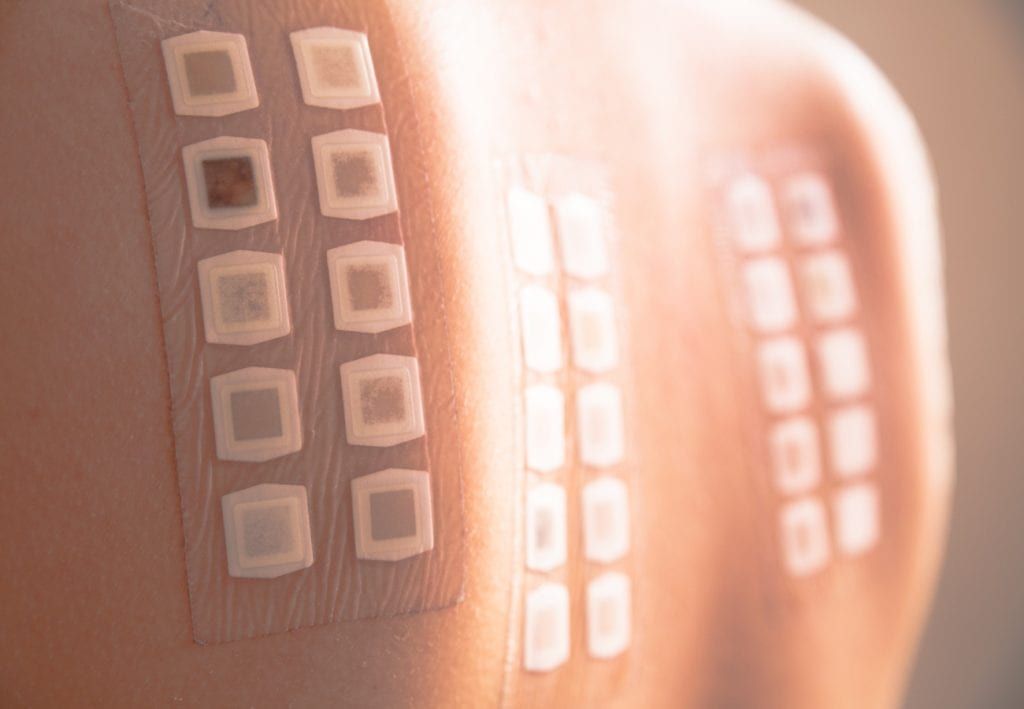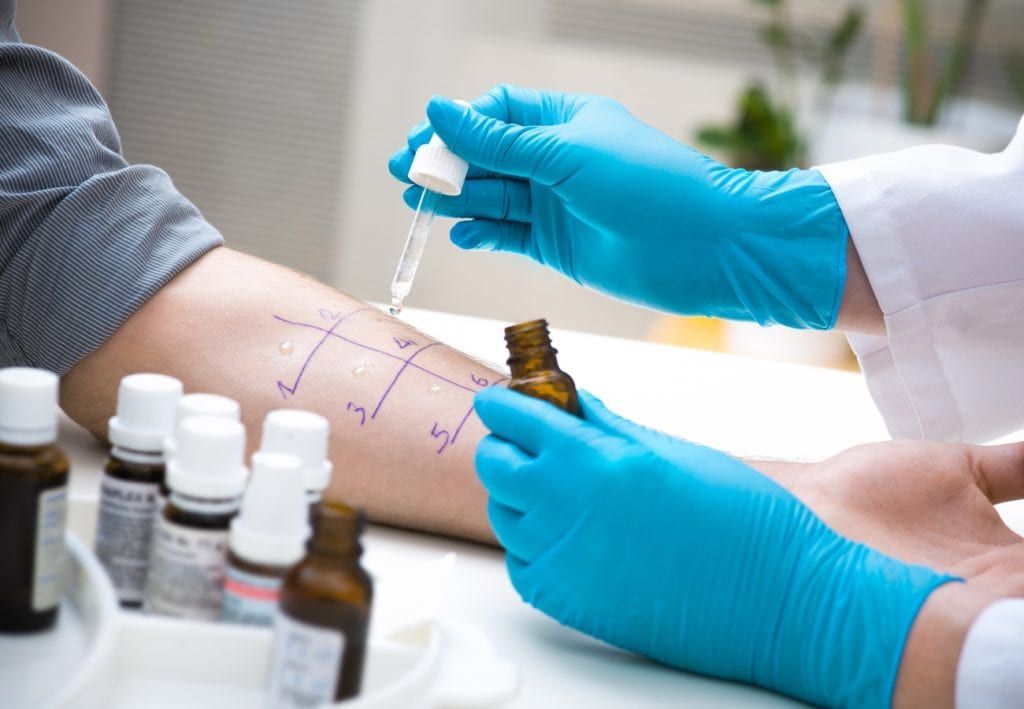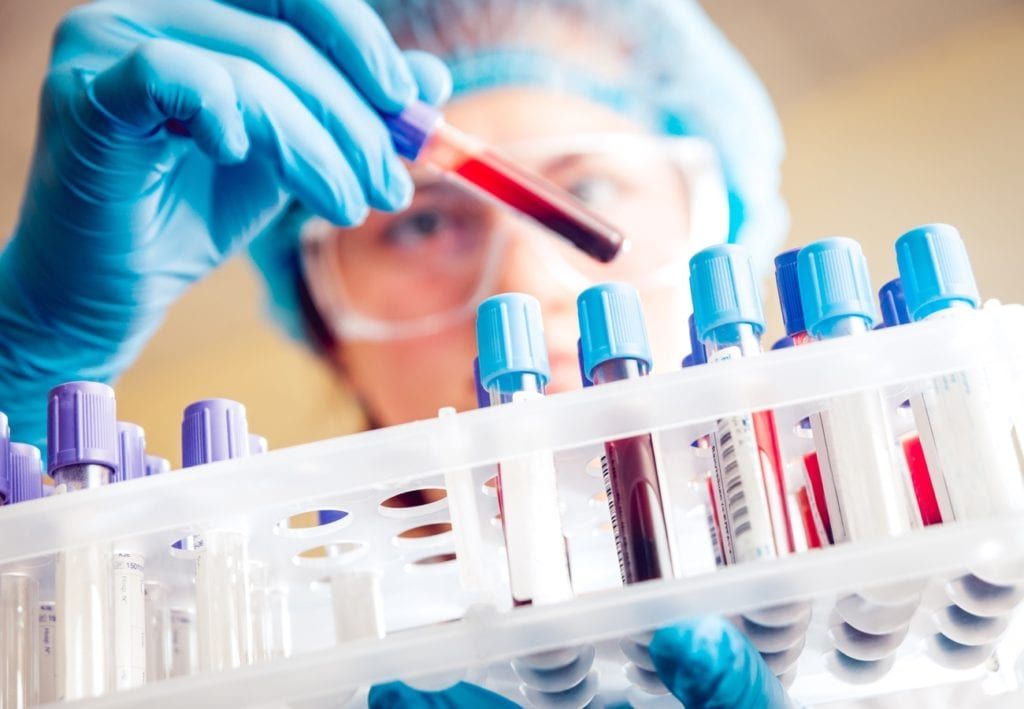
Skin patch testing is performed to detect the presence of allergic contact dermatitis (Type IV hypersensitivity). This procedure involves applying patches with test substances in small chambers to a patient’s back. The allergic reactions usually appear 2-4 days after applying the patches and thus patients are seen in the office for a total of 3 visits (one visit to apply the patches and then two follow up visits).

Some patients may also receive intradermal testing after completing skin prick testing. This procedure involves injecting a small amount of allergen under the skin and monitoring the site for a reaction. Similar to the skin prick test, the results of intradermal testing are typically available within minutes.

Skin prick testing is the most common test performed for allergies. This is a simple, in office procedure that is highly accurate and virtually pain free. This procedure involves introducing very small amounts of specific allergens into the superficial layers of the skin through an indentation or a “prick.” The allergens used for this test are selected by the allergist based on your medical history and personal concerns. The results of skin prick testing are generally available within minutes.

At Allergy, Asthma & Sinus Associates all of our clinical faculties offer spirometry services. Our office spirometry testing allows for our physicians to assess a patient’s lung function, diagnose certain lung conditions, monitor pulmonary function, and assess for improvement of symptoms. Spirometry testing can be carried out quickly in office and results are available within minutes
Pre and Post Spirometry
Some patients may be evaluated using a pre and post spirometry testing where we assess a patient’s lung function and then give them a breathing treatment. Following the breathing treatment the patient will be reevaluated to check for improvements in lung function.

At Allergy, Asthma & Sinus Associates we may recommend further evaluation through blood testing. These tests are used to evaluate several factors.
There are several conditions that can be further evaluated with the use of blood testing. Some common conditions include:
Types Of Blood Testing Order:

Allergy skin testing is the most accurate method of evaluating allergies. Allergy skin testing can be in the form of skin prick testing, intradermal testing, or skin patch testing. These tests are all safe, minimally invasive procedures that are easily interpreted in office by our Board Certified Allergist.
Medications containing antihistamines should be stopped at least 5 days prior to skin testing.
Click here for a detailed list of antihistamine medications.
The American Academy of Pediatrics does not consider age to be a restriction to skin testing. The appropriateness of skin testing for children depends on the individual child and their symptoms. At Allergy, Asthma & Sinus Associates, we specialize in pediatric allergies. We work with families to ensure that both the child and parents receive quality care.
Skin prick testing is the most common test performed for allergies. This is a simple, in office procedure that is highly accurate and virtually pain free. This procedure involves introducing very small amounts of specific allergens into the superficial layers of the skin through an indentation or a “prick.” The allergens used for this test are selected by the allergist based on your medical history and personal concerns. The results of skin prick testing are generally available within minutes.
Some patients may also receive intradermal testing after completing skin prick testing. This procedure involves injecting a small amount of allergen under the skin and monitoring the site for a reaction. Similar to the skin prick test, the results of intradermal testing are typically available within minutes.
Skin patch testing is performed to detect the presence of allergic contact dermatitis (Type IV hypersensitivity). This procedure involves applying patches with test substances in small chambers to a patient’s back. The allergic reactions usually appear 2-4 days after applying the patches and thus patients are seen in the office for a total of 3 visits (one visit to apply the patches and then two follow up visits).